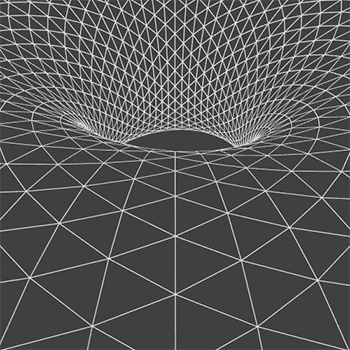# \ #
# "Here's the idea: reduce the system to reduced row-echelon" #
# "form; examine the coefficient matrix for conditions" #
# "that make it different from the identity matrix," #
# "if any, and connect these differences, if any, with the entries" #
# "in the vector of constants". #
# 1. "Given system:" #
# \qquad \qquad \qquad \qquad \qquad \qquad \qquad \qquad x + y + z \ = \ 1 #
# \qquad \qquad \qquad \qquad \qquad \qquad \qquad \qquad x + 2 y - z \ = \ b #
# \qquad \qquad \qquad \qquad \qquad \qquad \qquad \qquad 5 x + 7 y + az \ = \ b^2. #
# 2. "Convert to matrix/vector format:" #
# \qquad \qquad \qquad \qquad \quad \qquad \quad \quad ( ( 1,1,1 ), ( 1, 2, -1 ), (5, 7, a) ) = ( (1), (b), (b^2) ) #
# 3. "Begin to reduce it to reduced row-echelon form:" #
# \qquad \qquad \qquad \qquad \quad \qquad \quad \quad ( ( 1,1,1 ), ( 1, 2, -1 ), (5, 7, a) ) = ( (1), (b), (b^2) ) #
# "Subtract Row 1 from Row 2; Subtract 5 * (Row 1) from Row 2." #
# "Obtain the following:" #
# \qquad \qquad \qquad \qquad \quad \qquad \quad \quad ( ( 1,1,1 ), ( 0, 1, -2 ), (0, 2, a-5) ) = ( (1), (b-1), (b^2-5) ) #
# "Subtract 2 * (Row 1) from Row3. Obtain the following:" #
# \qquad \qquad \qquad \qquad \quad \qquad \quad \quad ( ( 1, 0, 3 ), ( 0, 1, -2 ), (0, 0, color(red){a-1}) ) = ( (2-b), (b-1), (b^2-2b-3) ) #
# "We do not need to reduce any further -- we can complete our" #
# "analysis clearly from the matrix in its current state." #
# 4. "Analysis of the reduced matrix:" #
# \ "The key position now, is the" \ \ color(red){a-1} \ \ "entry in the lower right" #
# "corner," #
# "i) Case 1:" \ \ color(red){ a-1 \ne 0. } #
# "If" \ \ color(red){a-1 \ne 0,} \ "then the matrix can be further reduced to" #
# "all 1's on the diagonal, and there will be a unique solution." #
# "So we have our first conclusion:" #
# \qquad \qquad \qquad \qquad \qquad \qquad \quad a = 1 \quad rArr \quad "unique solution." #
# "ii) Case 2:" \ \ color(red){ a-1 = 0. } #
# "If" \ \ color(red){a-1 \ = 0 }, \ "then the matrix has a row of 0's, and so the" #
# "system is either inconsistent [no solutions] or dependent " #
# "[infinitely-many solutions]. Which of these two situations" #
# "is true, depends on the value of the vector entry opposite the" \ \ color(red){a-1} \ \ "entry in the matrix -- it depends on the value of:" #
# \qquad \qquad \qquad \quad \qquad \qquad \quad \qquad \qquad \quad \ \ color(blue){ b^2 - 2b - 3 }. #
# "If" \ \ a = 1, \ "and" \ \ color(blue){ b^2 - 2b - 3 \ne 0 } \quad rArr" #
# "bottom row of matrix is all 0's & bottom entry of vector is" \ne 0 #
# \qquad \qquad \quad rArr \quad "system is inconsistent; no solution." #
# "If" \ \ a = 1, \ "and" \ \ color(blue){ b^2 - 2b - 3 = 0 } \quad rArr" #
# "bottom row of matrix is all 0's & bottom entry of vector is 0" #
# \qquad \qquad \quad rArr \quad "system is dependent; infinitely-many solutions." #
# "To finish, we need to solve:" \qquad b^2-2b-3 = 0. #
# \qquad \qquad \qquad \qquad \qquad \qquad \qquad \qquad b^2-2b-3 = 0 #
# \qquad \qquad \qquad \qquad \qquad \qquad \qquad \qquad (b-3)(b+1) = 0 #
# \qquad \qquad \qquad \qquad \qquad \qquad \qquad \qquad b = -1, 3. #
# "So we can state the conclusions of this subsection, compactly:" #
# a = 1, \ b \ne -1, 3 \quad rArr \quad "no solution; inconsistent." #
# a = 1, \ b = -1, 3 \quad rArr \quad "infinitely-many solutions; dependent." #
# "iii) Summary: As these cases cover all the possible situations" #
# "for the matrix and vector, we can summarize our results here:" #
- # a = 1 \qquad \qquad \qquad \qquad \qquad \quad \ \ hArr \ \ "unique solution." #
- # a = 1, \ b \ne -1, 3 \quad hArr \quad "no solution." #
- # a = 1, \ b = -1, 3 \quad hArr \quad "infinitely-many solutions."#
# \ #
# "Summary of Conclusions:" #
- # a = 1 \qquad \qquad \qquad \qquad \qquad \quad \quad hArr \quad "unique solution." #
- # a = 1, \ b \ne -1, 3 \quad hArr \quad "no solution." #
- # a = 1, \ b = -1, 3 \quad hArr \quad "infinitely-many solutions."#

